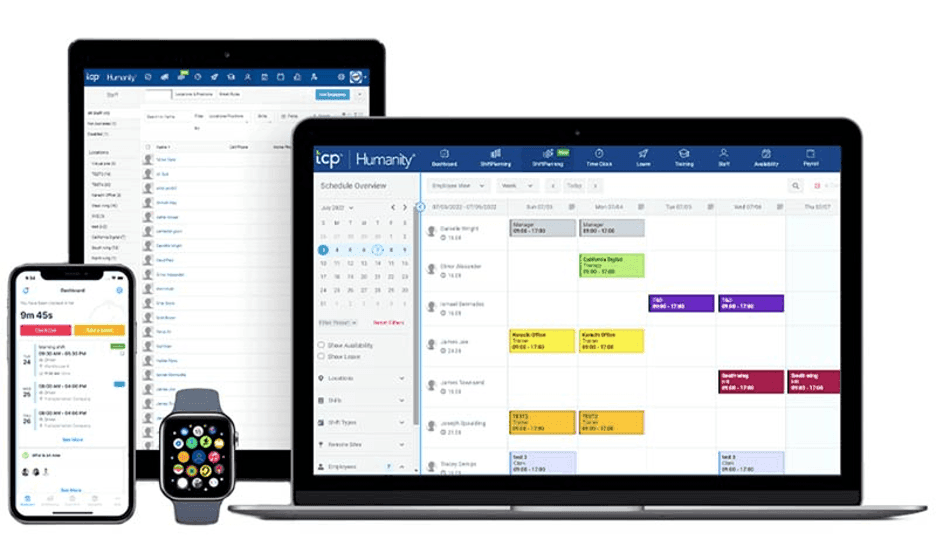The process of choosing employee scheduling software is much like the buying journey for any kind of business software. Start by outlining your company’s needs and budget for such a service. Next, research the market and use guides like this one to identify programs that include the features you desire at a price you can afford.
When comparing top choices, it can be tough to know which one will be the best for your business. That’s why we spoke with business leaders and HR professionals to identify what key factors to consider when choosing the right employee scheduling software.
Test Software User-Friendliness.
When we spoke with business leaders about selecting employee scheduling software, a common theme emerged: user-friendliness. It’s imperative to choose software that is easy for workers to navigate.
“Personally, I believe that if the software isn’t user-friendly, it doesn’t matter how many features it has – it won’t be used effectively,” Roland Jakob, an entrepreneur, executive leadership coach and managing partner of Blazekin.Media, told us.
You can test out the software by contacting vendors for software demos and signing up for free trials. Try two or three platforms and have your managers and employees weigh in on the user experience.

When choosing employee scheduling software, consider all the device types you want to be able to access it on. (Source: Humanity)
Identify Essential Scheduling Features.
When choosing employee scheduling software, focus on the key features you will actually need. For example, do you need drag-and-drop schedule templates? Do you want employees to be able to swap shifts with one another? How much freedom do you want to give employees to set their preferred availability?
For Jakob, certain shift scheduling tools were a priority for efficient shift management. However, he advises only focusing on the scheduling features that matter most to your business.
“I’d recommend making a list of your non-negotiables and then using that as a guide when evaluating different options,” he added. “Don’t be swayed by bells and whistles you might never use. Focus on what will truly make a difference in your day-to-day operations.”
Look for Notifications and Alerts.
Other key features to look out for are notification and alert capabilities. It’s important that your workers are promptly notified of new schedules, schedule changes and other timely communications so they know when to be at work. This is especially true if your company has rotating shifts or schedules. Notifications are also helpful for keeping management on track with things like employee absences, time off requests and shift changes.
“In my experience, clear communication is key in any business, so having robust reminders and notifications was a must-have for me,” said Jakob. “I always tend to forget something as I have plenty to juggle on my plate, and notifications do help out quite a bit.”
Ask About Integrations.
Employee scheduling software is not a siloed product. Look for a solution that can easily integrate with your current payroll provider and other business software. This will help with data transfer, payment accuracy and workforce management.
When Huang Xiong, founder and CEO of BeltBuy, chose scheduling software for his business, integration was paramount.
“The shift scheduling tools were a priority, but what really sealed the deal was its integration with our payroll and time-tracking systems,” said Xiong. “I needed something that would streamline these tasks and reduce errors, especially since I oversee multiple employees across different shifts.”
If compliance is a top concern, an integrated employee scheduling and payroll software solution can help enforce meal breaks, ensure accurate
night shift differential pay and more.
Compare Cost vs. Value.
Once you identify your desired software’s form and functions, another big consideration is how much it will ultimately cost you. As a small business owner, you’re already aware of your bottom line. Choosing a solution that breaks your budget isn’t financially sustainable, but purchasing a platform that doesn’t adequately meet your needs is a waste of money.
“Don’t settle just to save a couple of dollars,” said Dan Berzansky, CEO of Premier Aquatics, Premier Swim Academy and OneTeam360. “These systems save you countless hours, which equates to payroll savings. Don’t save a little just to waste a lot in the long run.”
You’ll need to do your best to balance these aspects.
Evaluate Customer Support.
Lastly, estimate how much customer service you and your team may require. Some vendors only provide phone support for their more expensive plans, while some don’t give assistance over the phone at all. Make sure the company offers customer support in a way that works for your business.


















